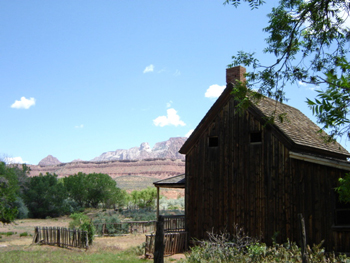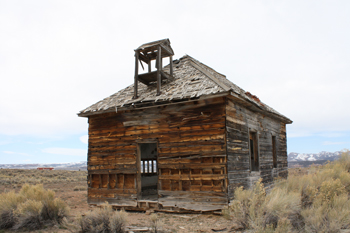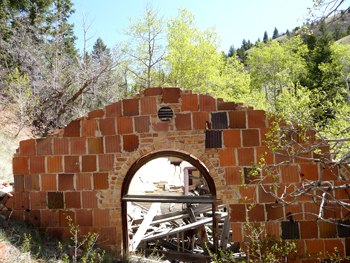This article may include affiliate links. If you click a link and make a purchase, Utah Outdoor Activities may receive a small commission at no extra cost to you. We only recommend products or services we personally use. FTC Affiliate Disclosure.
Because Utah’s history was often intertwined with the boom/bust mining industry, it’s unsurprising that our state has lots of ghost towns. These sites range from streets lined with buildings to lonely outposts, but they all offer opportunities to connect with the past in a special way.
This article showcases four sites that are scattered throughout the state. Three are well known and appear on maps, while the last one will require some searching to locate. Please note that while some of these sites are on public land, others require special permission from private landowners.

Grafton Ghost Town:
This is one of the most accessible ghost towns in the state. It’s so beautiful and well preserved that it’s been used as a setting for multiple films, including “Butch Cassidy and the Sundance Kid.”
The area was settled in 1859, but the town was nearly destroyed during the great flood of 1862. The resilient residents moved a mile upstream on the Virgin River and built a new town they named after Grafton, Mass.
The Grafton Heritage Partnership has done a remarkable job of restoring and protecting the town’s remaining structures. The old stone church is Grafton’s crown jewel, and you’ll also find multiple homes and barns to visit. Also make sure to visit the historic cemetery.
How to get there:
Grafton is located just west of the town of Rockville on State Route 9. Take Bridge Road over the river and then follow it westward as it parallels the river to the town site.

Widtsoe Ghost Town:
Though much of the town is gone, Widtsoe boasts one of the most picturesque relics in Utah—its solitary schoolhouse.
Like many early Utah settlements, Widtsoe went through a long series of name changes. In 1902 it was named Adair, in honor of an early settler. This was changed to Houston shortly thereafter, and then changed to Winder in 1910. Seven years later, the post office decided that there were too many “Winders” in the region and changed the name to Widtsoe, in honor of John A. Widtsoe, who was a developer of the dry farming techniques used in the area.
Drought conditions forced the farmers eventually, and the population began to decline. By the mid-1930s, the town was abandoned.
In addition to the gorgeous schoolhouse, Widtsoe has a handful of other surviving homes and sheds.
How to get there:
Widtsoe is on the east side of State Route 22, about 24 miles south of Antimony.

Solitary Schoolhouse:
Spring Canyon, just outside of Helper, is one of Utah’s historical treasures. As you make your way up the canyon, you’ll pass the relics of mining towns with names like Standardville, Rains, Peerless, Mutual and Latuda.
About halfway up the canyon, a smaller canyon takes off to the north. It’s thick with trees and looks as though it will simply fade into the mountains. But after you hike up a couple miles, you’ll come across the rails of a long-lost train. And a bit further up, you’ll find the ruins of this gorgeous schoolhouse.
How to get there:
Helper is right off U.S. Route 6, about six miles north of Price. From Helper, head west to Spring Canyon.
Other Articles of Interest:
We hope you enjoyed this information. For more outdoor activities, please connect with us on YouTube, Facebook and Instagram. Help us keep this site up and running by visiting our online store which features outdoor themed gifts, decor and more. Thank you for visiting and for your ongoing support!